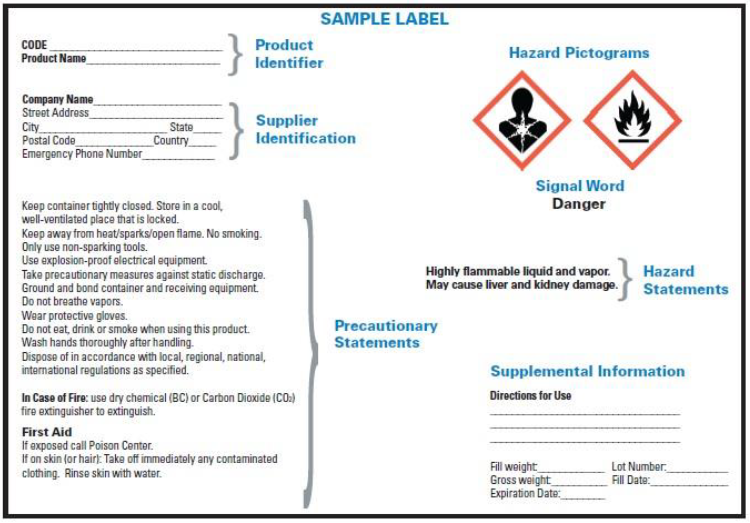Hazard Communication
The Hazard Communication Program applies to all university faculty and staff handling and working in ares with hazardous chemicals. The ONLY exception to this program are individuals that work in laboratories (those individuals are covered by SMU Research Safety Programs and the University Chemical Hygiene Plan). The purpose of the Hazard Communication Program is to ensure that University personnel are informed about the identity and hazards of chemicals in the workplace and the appropriate preventative and protective measures for dealing with these chemicals.
Each department will implement their own program. It is the responsibility of the department to ensure the staff understands and follows the written Hazardous Communication Program. The department should revise its Hazardous Communication Program once a year. Copies of the Hazard Communication Program should be made available to the departmental employees. EHS will evaluate the program annually.
Information regarding different components of the program can be found below:
Hazardous Chemical Inventory
The department will manage its own hazardous materials inventory. The inventory should be continuously updated with any new hazardous materials and remove any materials that are no longer in use. The department is responsible for updating the inventory and sending a copy of the inventory list to EHS for record keeping. EHS will annually survey the hazardous materials inventory to ensure its accuracy. A hazardous chemical inventory template can be found below in resources.
Safety Data Sheets (SDS)
Safety Data Sheets are written material that contains the chemical’s physical, chemical and biological hazards. All of the SDS are written in the same format and divided into 16 sections such as toxicological information and first-aid measures. SDS must be available to all of the hazardous chemicals used in the department. The SDS should be available and easily accessible to the departmental employees. There are several different ways to obtain SDS. One method is by requesting the information directly from the manufacturer and/or visiting their website. Also, the SDS may be obtained by performing a Google search on the chemicals name or CAS number. At last, EHS may be able to help with obtaining copies of the SDS. For more information concerning SDS, please refer to the resources below.
Labeling
The Globally Harmonized System for Chemical Classification (GHS) system has been implemented since June 2015. This classification system enables hazardous chemical labels to be recognize internationally. All hazardous chemical containers require GHS labels. GHS Labels must include the following information: product identifier, supplier’s contact information, chemical hazard classification (pictogram), signal word, hazard and precautionary statements and supplemental information. The label must be written in English and clearly visible on the hazardous chemical containers.
GHS Sample Labels

GHS Pictogram Description

Training
All employees that maybe exposed to hazardous materials in the workplace are require to attend the Hazard Communication training. Hazard Communication training will provide the employees with the general guidelines on the OSHA Hazard Communication Standards, understanding the Safety Data Sheet, hazardous chemical labeling and etc. The training must be completed annually online. The department must maintain the employees’ training records and train its employees on the properties and proper handling of the specific hazardous chemical used in the department.
Additional information about the Hazard Communication can be found at the following resources:
Reference:
OSHA 29 CFR 1910.1200